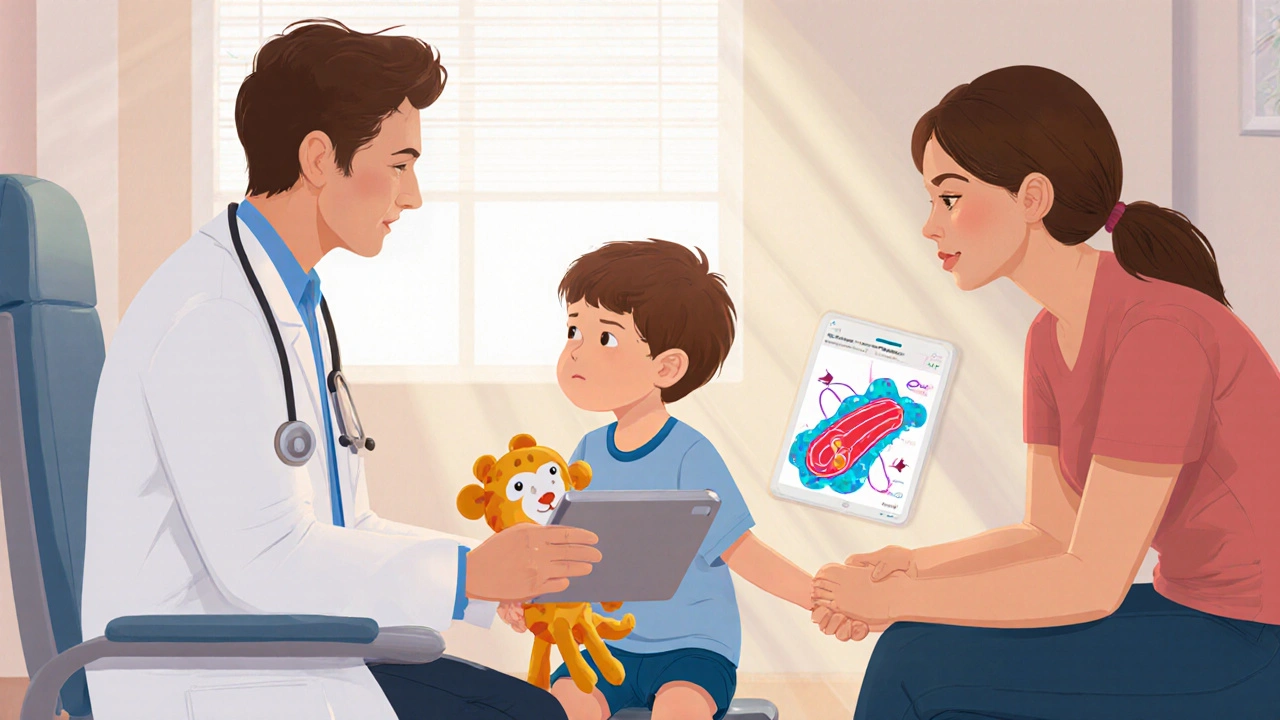Pediatric Rhabdomyosarcoma
When dealing with pediatric rhabdomyosarcoma, a rare cancer that starts in the skeletal muscle tissue of children. Also known as childhood rhabdomyosarcoma, it typically appears before age 10 and can affect the head, neck, trunk, or limbs. This disease belongs to the broader group of soft tissue sarcoma, malignancies that arise from connective tissues such as muscle, fat, and nerves. Effective care usually mixes chemotherapy, drug regimens that target rapidly dividing cells with radiation therapy, high‑energy beams that shrink tumors. Understanding how these pieces fit together helps families navigate a complex journey.
Why does pediatric rhabdomyosarcoma happen? Genetic changes in muscle‑precursor cells trigger uncontrolled growth. Some kids carry inherited mutations in the TP53 or RAS pathways that raise risk, while most cases appear sporadically. Environmental triggers are rare, but research shows that prenatal exposures and certain birth defects can increase susceptibility. Knowing the genetic backdrop aids doctors in tailoring treatment and in offering counseling for siblings.
Key Treatment Pillars
The first pillar is chemotherapy. Protocols like VAC (vincristine, actinomycin‑D, cyclophosphamide) have been standard for decades because they attack cancer cells throughout the body. Dose timing is critical: high‑intensity cycles shrink the tumor quickly, allowing surgeons to remove what remains with less damage to surrounding tissue. The second pillar, radiation therapy, is used when surgery can’t achieve clear margins or when the tumor sits near vital structures. Modern techniques—intensity‑modulated radiation and proton beams—focus the dose while sparing healthy tissue, which matters a lot for growing children.
When surgery is an option, pediatric surgeons aim for complete excision with minimal functional loss. For tumors in the head and neck, preserving speech and swallowing is a top priority, so multidisciplinary teams often combine limited surgery with radiation. In the extremities, limb‑sparing approaches have replaced amputation in most cases, thanks to precise imaging and targeted therapies.
Beyond these three core methods, clinical trials open the door to newer options. Targeted agents that block the IGF‑1R pathway, immunotherapies that rally the child’s own immune system, and novel radiopharmaceuticals are all being tested. Participation in a trial can give access to cutting‑edge care while contributing valuable data for future patients.
Supportive care rounds out treatment. Anti‑nausea meds, growth‑factor injections, and nutritional counseling keep kids strong enough to tolerate aggressive regimens. Psychological support for the family—counselors, support groups, and school liaison services—helps manage the emotional toll of a cancer diagnosis.
Monitoring after therapy is just as vital. Regular MRI or CT scans, blood tests, and physical exams catch any recurrence early when it’s most treatable. Survivorship programs address late effects like cardiotoxicity from anthracyclines or hormonal changes from radiation, ensuring long‑term health.
Below you’ll find a curated set of articles that dive deeper into each of these areas. From practical guides on managing side effects to the latest updates on clinical trials, the collection is designed to give parents, caregivers, and healthcare professionals actionable insights while navigating pediatric rhabdomyosarcoma.
Rhabdomyosarcoma in Children: Essential Guide for Parents

A clear, parent‑focused guide on rhabdomyosarcoma in children covering symptoms, diagnosis, treatment options, side‑effects and support resources.
